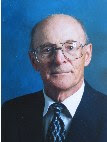Manitoba Hx Med Society
On Tuesday Mar 14/2006 I attended a meeting of the Manitoba History of Medicine Society. There were 5 presentors- All Medical students. Their 10 minute presentations were trial runs for papers they would be presenting at the University of Calgary later this month at the History of Medicine Days Symposium.. I was very much impressed not only with their knowledge but also their skills of presentation. All used computers for their power point presentations
Of interest was that 4 of the 5 students were females. Not surprising one of these female students discussed " female doctors of the 1900s" : A second student spoke on "Hand hygiene: past and present ", 3rd on "Organ Transplantation " while the 4th female student reviewed "The development of Rheusus (prophylactic ) treatment". The 5th student- lonely male- spoke on the " Discovery of Curare".
It was the topic on RH prophyllaxis which interested me. Back in 1965 when I established the Winnipeg Clinic Research laboratory as a department of cell biology to study cancer and aging, I became interested in Dr. Jack Bauman's prophylaxis for erythroblastosis fetalis - Up to that time when maternal blood tests showed that the pregnant mothers possessed high titres of RH antibodies,his team would undertake fetal intrauterine blood transfusions hopefully to salvage a live fetus. I reasoned that because the fetus has a poorly developed immune system that after such transfusions they should accept- later in life - blood and other grafts from their donors without creating an immune response. It is often overlooked by clinicians that blood transfusions are really similar to organ transplants - we use live blood cells. Since I was acquainted with the lymphoblastic transformation phenomenon commonly used to test for immunological tolerance. I had been using it Saskatoon while employed with the U. of Saskatchewan in the Department of Cancer Research as well as in Winnipeg in my own private laboratory (Western Cytogenetic Laboratory ) for doing chromosomal or karyotypic analysis.
So I would visit the RH Lab, where the staff would search their clinical records to find both the donor and recipient of the blood. I would mix them together and see if the cells underwent blast transformation. Unfortunately the Winnipeg Clinic Research Lab dissolved before I could complete the study. Preliminary studies did suggest that there was very little evidence of blast transformation suggesting that fetus later in life would accept blood from their donors. It would have been more convincing if skin or other types of homografts could have been tested. Unfortunately Dr. P.H.T.Thorlakson and other directors of the Research lab dissolved the Research Institute within 3 years after it was established. These comments were made at the meeting.


0 Comments:
Post a Comment
<< Home